Bummed out over bunions: Do toe spacers and splints actually help relieve pain and swelling?
Can these also realign your big toe? A podiatrist gives her take on these bunion "correctors".
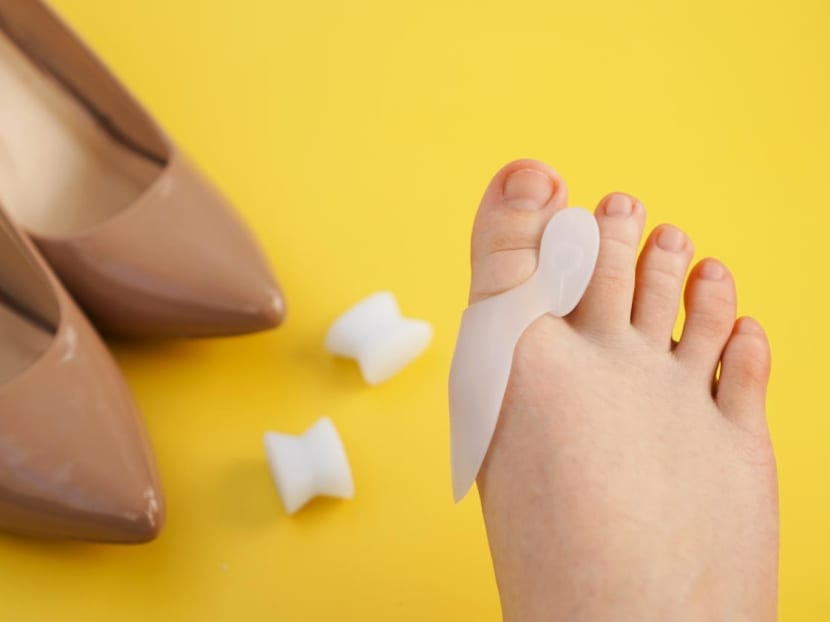
(Photo: iStock/Brillianata
For those who love wearing high heels or shoes with narrow and pointy shoeboxes, bunions can be a pain. They are the bony bumps on the side of the feet where your big toes begin. These foot deformities take years to develop and can be rather bothersome for their owners.
A bunion – or a hallux valgus in medical terms – occurs when the big toe joint known as the metatarsophalangeal or MTP joint (there are five MTP joints on each foot) gets forced out of alignment due to factors such as wearing those shoes we just mentioned.
If you’re overweight, the pressure forcing your toe out of alignment is even greater. You could also develop these bony bumps if you have a family history of bunions, certain foot types (being flat footed, for example) or have inflammatory arthritis such as rheumatoid arthritis.
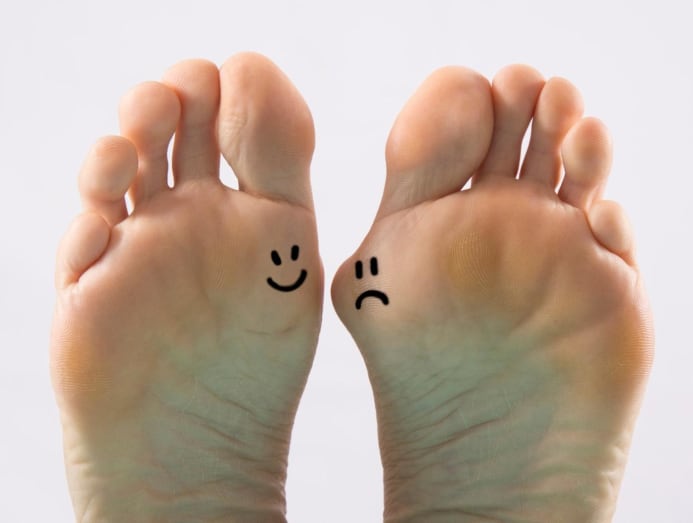
“We grade bunions into four stages: One (none), two (mild), three (moderate) and four (severe) based on how much deviation the big toe has towards the smaller toes,” said Alexandra Foo, a podiatrist from Khoo Teck Puat Hospital.
“Generally, out of 10 patients with foot pain, we see about three to four people with painful bunions,” she said.
WHAT ARE THE SIGNS?
Bunions typically present as a bulge at the base of your big toe in the beginning and may be easy to miss. As it progresses, the bulge swells and reddens. Hardened skin such as corns and calluses may also form around it.
Meanwhile, your big toe begins to deviate from its original position and bends towards the second toe. In severe cases, it may even overlap with the second toe. There could be pain or a burning sensation when you try to bend your big toe, or it just feels numb.
HOW DO BUNION SPLINTS AND TOE SPACERS WORK?
You might have seen advertisements for bunion splints and toe spacers. They don’t cost much (as little as S$20) and they seem to promise relief from the redness, swelling and pain caused by bunions. But do they actually work?
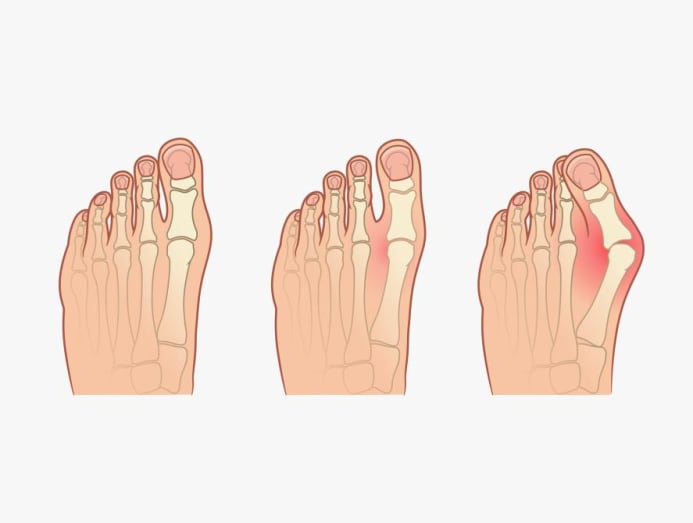
Bunion splints vary in design and some of them have a sleeve that wraps around your big toe as well as a spacer to keep it separate from the second toe. Other bunion splints may look like a miniaturised knee brace; they keep your big toe straight by supporting it from the side.
According to Foo, bunion splints are “theorised” to stretch out the “thin, tight tendons and muscles that control the position and movement of the big toe” in the hope of realigning it. They provide an active resistance by pulling the big toe away from the second toe. “This results in a passive stretch to the soft tissues that may be contributing to the deviation and provide some pain relief,” she said.
Toe spacers (generally made of silicone or gel material), as the name implies, space out your big and second toes so that they do not overlap. While they don’t pull the toes apart like the splints do, they temporarily force or support the big toe’s intended position, said Foo. Simply put, “toe spacers act like a wedge between the first and second toes” and prevent the big toe from pushing closer toward the second toe, she said.
WHY ARE THESE ITEMS OFTEN RECOMMENDED FOR USE AT NIGHT?
That’s because you’re likely to be off your feet sitting on the sofa watching TV or lying in bed, which takes the weight and pressure off your MTP joints, said Foo. “This allows soft tissues (muscles, tendons and ligaments, for instance) supporting the joints to relax and be stretched out via bunion splints or toe spacers,” she said.
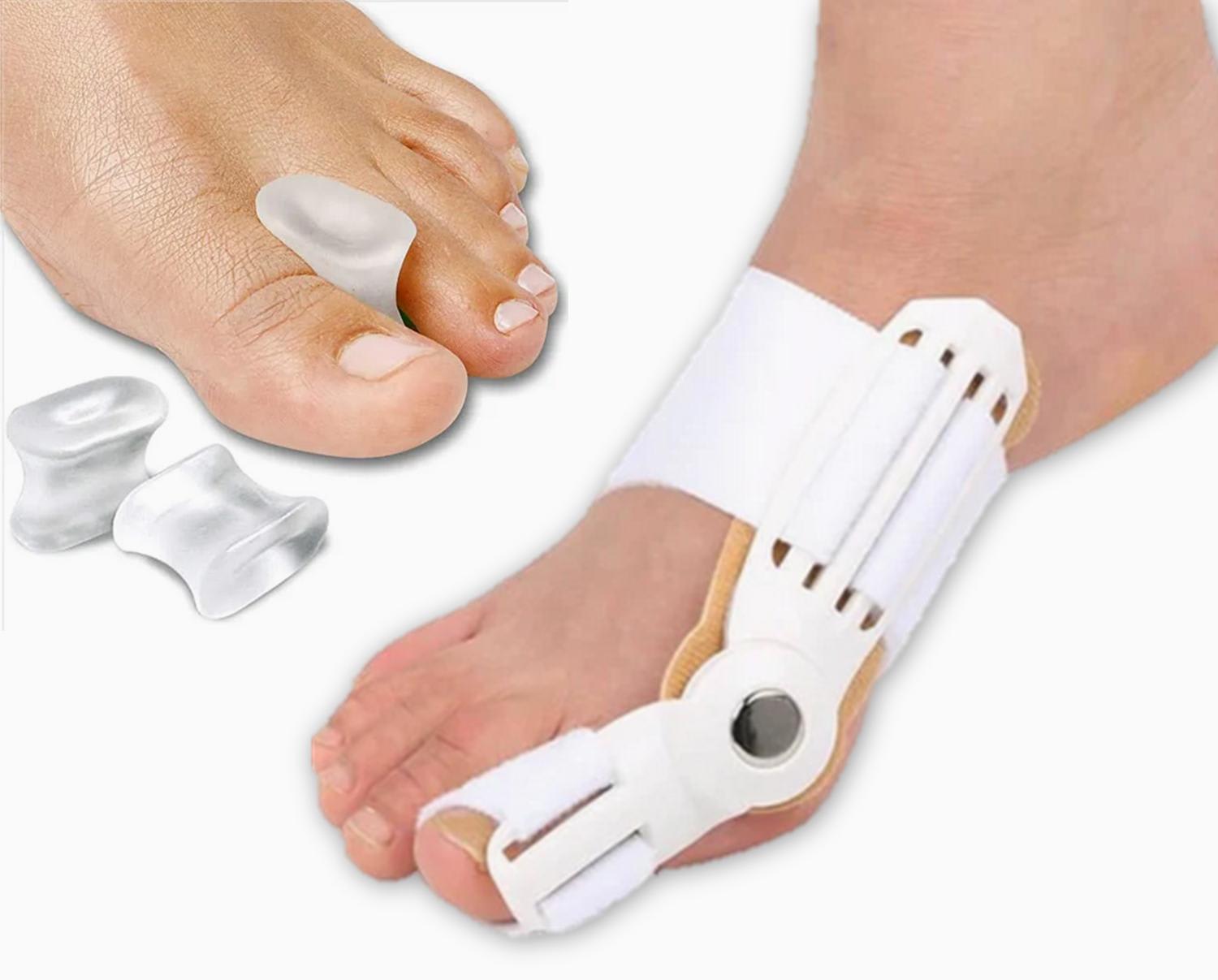
DO THESE PRODUCTS WORK?
There are no local studies done on the success rates of such products, according to Foo. However, there are a few overseas ones that demonstrate some pain relief from the use of the splints and spacers over time.
Still, “there is no hard evidence so far to prove that these bunion splints and toe spacers will correct the big toe deformity over time”, said Foo. “They will not reposition the toe back to its initial position, especially for bunions that have already progressed into its later end-stages.”
She added: “At best, bunion splints and toe spacers may only help in reducing marginal degrees of deviation but not enough to show a complete correction of these bunions.”
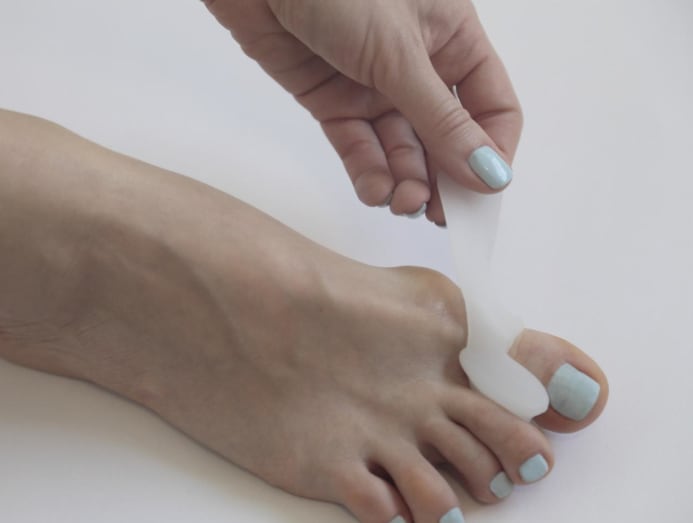
ARE THEY WORTH TRYING?
“If your bunions are in the early stages one through to early three, it would be fine trying them out,” said Foo. That’s because the soft tissues surrounding the joint are likely to be more pliable and accommodative compared to bunions in their later stages, she explained.
But you can’t rely solely on these products without considering the other factors that may be contributing to your bunions. These could include an “elevated body weight, poor footwear choices, excessive flat feet, and weak muscles in your feet and ankle”, said Foo. If you’re still jamming your feet into heels or pointy shoes, you may not notice any changes. Even if there are slight results, your toe may revert to its deviation once you stop using them, she said.
If you’re already trying a splint or spacer, consider this: “It should feel comfortable when wearing, while exerting an appropriate amount of push or pull against the big toe”, said Foo.

WHAT OTHER NON-SURGICAL CORRECTION METHODS ARE THERE?
Other than bunion splints and toe spacers, orthoses are commonly used to “manage the excessive forces that are exerting onto the big toe joint” and provide pain relief when walking, said Foo. Manual therapy and taping may also be used in some instances.
Unfortunately, all of these non-surgical methods can only slow down your bunions’ progression but that is all, she qualified.
To help your bunions further, switch to better fitting shoes that are ideally flat and wide enough to accommodate the bunions. “We usually tend to find more females than males with bunions because of the type of heels and pointy shoes that are worn. This is especially so when the heels are more than 2cm in height, and there is much more pressure being put onto the big toe joint,” said Foo.
If the patient is obese, healthy and sustainable weight loss will definitely help in reducing the amount of pressure and pain, she added.
You can also try foot “core” exercises and toe exercises to help you improve joint mobility and reduce joint stiffness. “Some examples of these exercises are toe spreading, toe grasping and controlled big and small toe movements,” suggested Foo.








